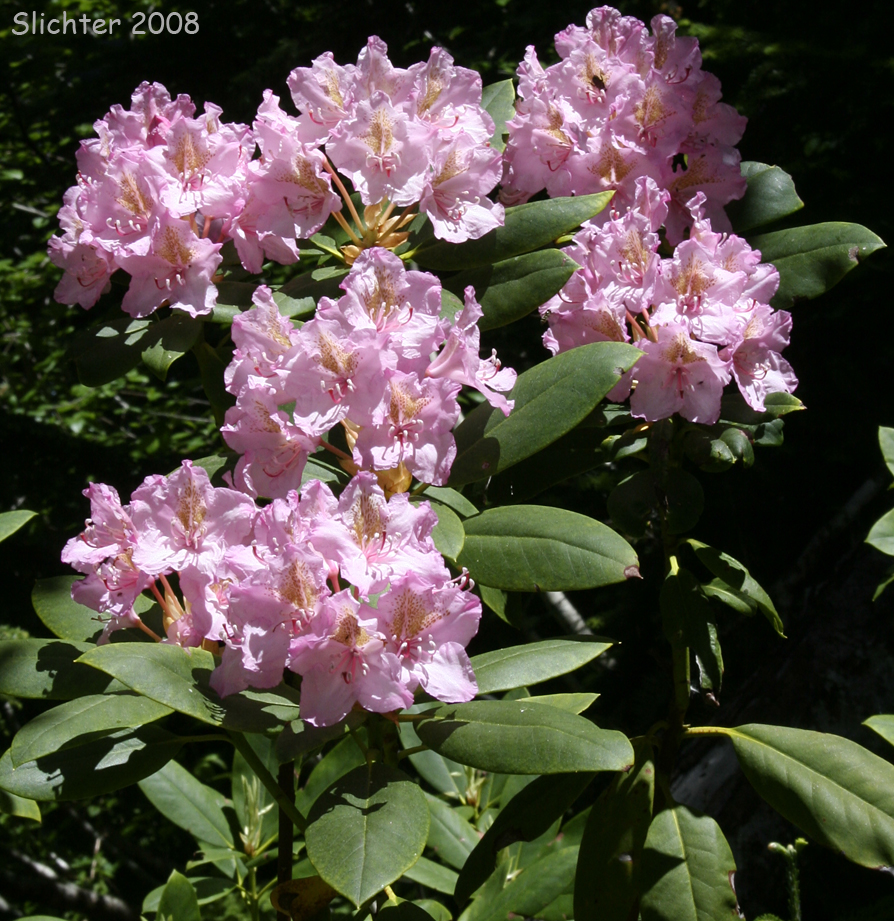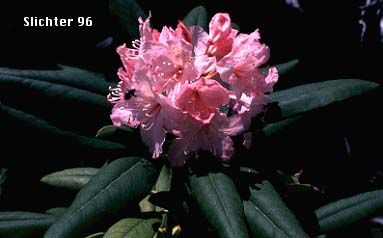
Also known as Pacific rhododendron and California rose-bay, western rhododendron is an attractive shrub with several to many stout branches branching from the base to heights of 1.507 meters high. The evergreen leaves are thick and leathery and dark green and glabrous above and covered by short hairs below. The measure from 10-25 cm long and are narrowly elliptic to elliptic-oblong in outline, tapering to points at both ends. The leaf petioles are short and stout. Leaf arrangement is alternate and crowded towards the ends of the branches. Older leaves tend to drop off.
The flowers are found in close terminal corymbs (See photo above.) with pedicels mesauring 3-4 cm long. The calyx is barely discernable with very shallow, rounded lobes. The corollas are broadly bell-whaped and slightly irregular in shape and size. The corolla measures 2.5-4 cm long with the lobes about equal in length to the tube. The corollas ranged from an attractive rose-color to occasionally all white, speckled with green within the corolla. 10 stamens are present. The capsule measures about 2 cm long.
This is a species well suited to the shade garden west of the Cascades! Underplanted with wood-sorrel, false-lily of the valley, wild ginger, fawn lilies and trilliums, it makes for a quite attractive addition to the forest garden.
Western rhododendron may be found in moist forest thickets from the lowlands up to the middle altitudes in the Cascades and Coast Ranges of Oregon and Washington.
Western rhododendron may be found along the western slope of the Cascade Mts to the coast from British Columbia south to northern California.
In the Columbia River Gorge, it may be found between the elevations of 1200'-4000' from near Larch Mt. east to Wahtum Lake.
